A collar bone piercing, also known as a clavicle piercing, is a surface or dermal piercing placed on the uppermost part of the chest, just below and along the collar bone.
It’s a relatively new procedure and still not very common. This unusual nature of clavicle piercings has its pros and its cons – your piercing will be original and sure to be eye-catching, but it may be more challenging than usual to find the right piercer for the job.

Keep reading for more information on getting a collar bone piercing safely, aftercare tips, and plenty of inspiration for your own piercing!
Procedure
In the case of a surface collar bone piercing, two holes are required – there will be a bar going underneath the skin, connecting the two beads showing above the surface.
The piercer will mark the entrance and exit points – i.e., where the holes, and therefore the beads of the jewelry piece, will be – with a surgical marker.
After disinfecting the skin a needle will be inserted, puncturing the skin at the entry point, going underneath along the surface, and exiting at the other marked point. The piercer will then fit and close the jewelry bar, and disinfect the area again.
Recommended: Don’t miss our guide to micro dermal piercings next!
Depending on the circumstances, it may be possible for the piercer to provide spray anesthesia to help deal with the pain. Expect a bit of blood, too – it’s perfectly normal for a surface piercing to bleed for a short amount of time during the procedure.
Bruising and redness are also nothing to worry about unless they persist for longer than a day.

Collar bone dermal piercings
Although surface clavicle piercings are more popular, dermal piercings in this area are also an option. A dermal is a single-point piercing, and as such doesn’t have a separate entry and exit point.
After proper disinfection, the piercer creates a small hole in the surface of the skin to insert an anchor into the middle layer of the skin. The anchor is a permanent piece in the shape of a post, which stays in your skin and is not exchangeable. The actual jewelry – typically a bead, spike, or cube – is screwed onto the top of the post.

Choosing a piercing studio
Any reputable piercing information source will always highlight the importance of choosing your piercer carefully. You knew it was coming, and you might be tempted to skip over the safety precautions, but for your own wellbeing do make sure you’re aware of the risks and possible ways to minimize them.
As we’ve already mentioned, collar bone piercings are not particularly common and as such, they’re something of a specialized service on the part of the piercer. They require a high level of expertise and at least a modicum of anatomy knowledge.
Recommended Next: Don’t miss our massive guide on eyebrow piercings!

Performing the procedure incorrectly could result in damage to a nerve or a blood vessel, both of which are serious complications with potential long-term consequences.
When choosing your piercer, consider looking for a professional who already has proven experience in successful surface piercings or, even better, clavicle piercings.
The piercing shop should have a valid business license and health inspection report – this proves the general standard of hygiene and professionalism should be acceptable.
Don’t be afraid to ask questions and to request to see the studio before getting your piercing done there. The area where piercings are done should be clean and well-maintained.

While it’s true that less experienced piercers will be a cheaper option, likely with shorter waiting times, always remember that your health and wellbeing are the stakes here.
It’s not worth hurting yourself and living with possible complications over a few bucks or a couple of weeks’ wait.
Recommended: Take a look at our big guide to hip piercings.
Aftercare
Your piercer will provide you with detailed aftercare instructions upon completing the piercing process. In general, it’s important to:
– Clean the area regularly – a gentle clean with a saline solution once or twice per day is usually enough. Make sure your hands are clean before you touch the piercing area and be as gentle as possible when cleaning around the piercing – moving the jewelry will prolong the healing process and increase the risk of infection and rejection.

– Avoid touching the piercing or the area – two points here: avoiding infection and speeding up healing. Touching the piercing allows for the transfer of bacteria from your hands to the wound, which in turn can lead to infection and complications.
Moving the jewelry, meanwhile, will slow down healing and increase the likelihood of rejection.- Avoid using perfumed or chemical products on the piercing area – examples include perfumes, scented soaps and lotions, and makeup.
– Avoid leaning or sleeping in a position that puts pressure on the area – again, this can lead to the jewelry moving and the wound being disturbed.

As with any piercing, it’s not a good idea to try to replace or change the jewelry until the healing process is complete. Surface piercings take a minimum of 12 weeks to heal, while dermal piercings take 6-12 weeks.
Even if you think your piercing has healed, it’s advisable to visit your piercer and ask for confirmation before attempting to remove or replace the jewelry.
Pain level
We all know what the process of getting a collar bone piercing looks like, and how sensitive that area of the body is, so one thing’s for sure – it’s going to hurt.
How much will depend on several factors, chief among them your individual pain tolerance and the expertise of your piercer.

As we’ve already mentioned, it may be possible to use spray anesthesia or a similar product to numb the area temporarily.
It can also help to make sure you arrive for your piercing appointment well-rested, relaxed, and not on an empty stomach.
If you’re stressed and your body is tired or dehydrated, you’re likely to have a more unpleasant experience.
Recommended Article: We’ve got an amazing guide to orbital piercings. You can check it out here.
Cost
The cost of a dermal piercing tends to fall somewhere between $70 and $100, while a surface piercing will usually set you back between $50 and $100.
However, be prepared for the price to be higher than this – a collar bone piercing is a relatively uncommon procedure, and as such may cost more than standard piercings.







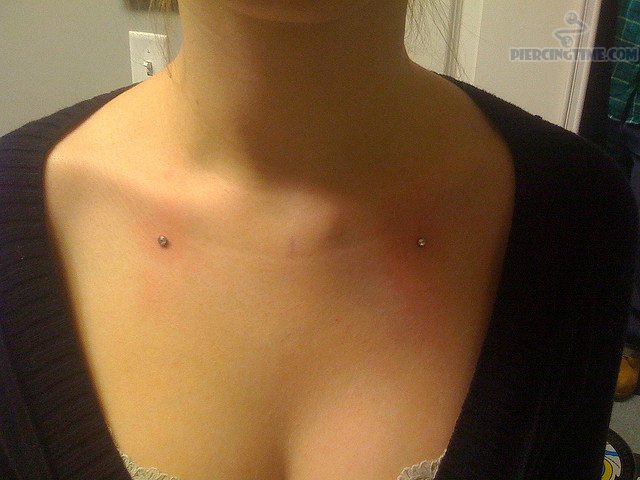







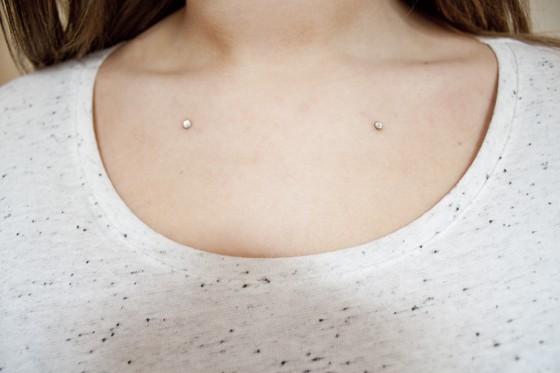






















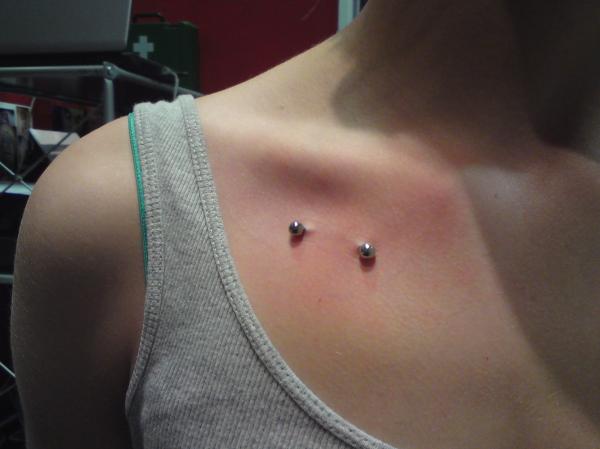










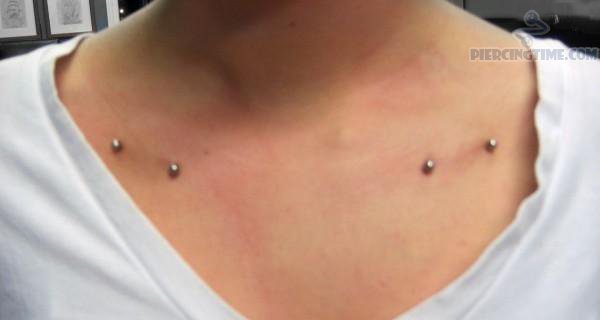
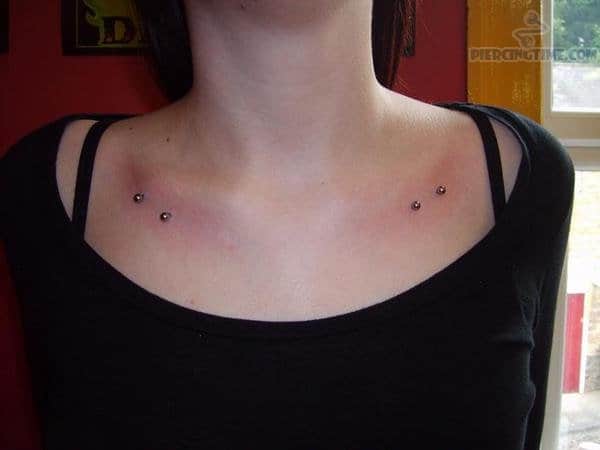







Final Words
Of course, a collar bone piercing will make you stand out! Especially if your outfit is intentionally designed to be open on the collar bone parts.
But before having this piercing, you should be sure to consider a lot of important information about it!








